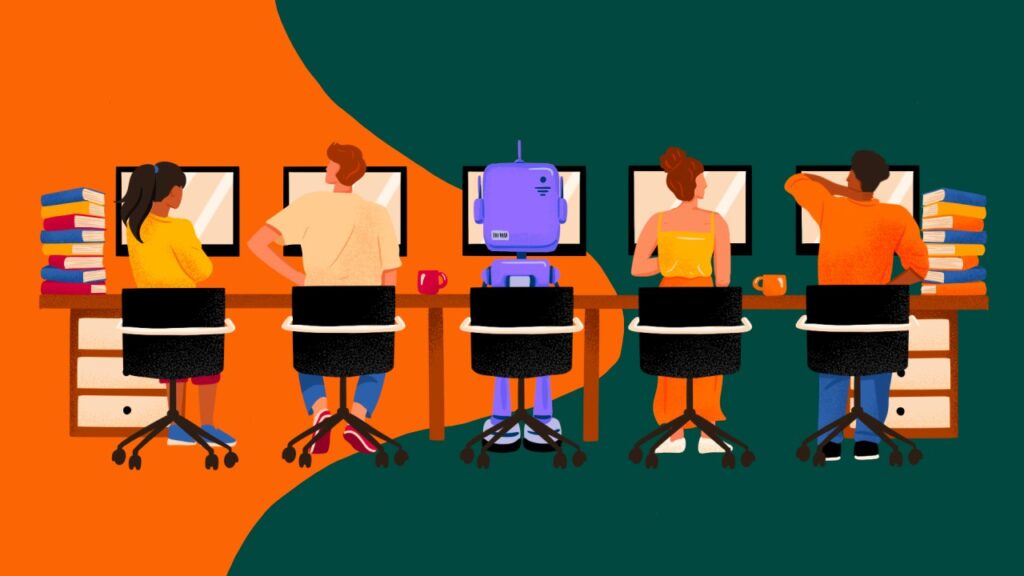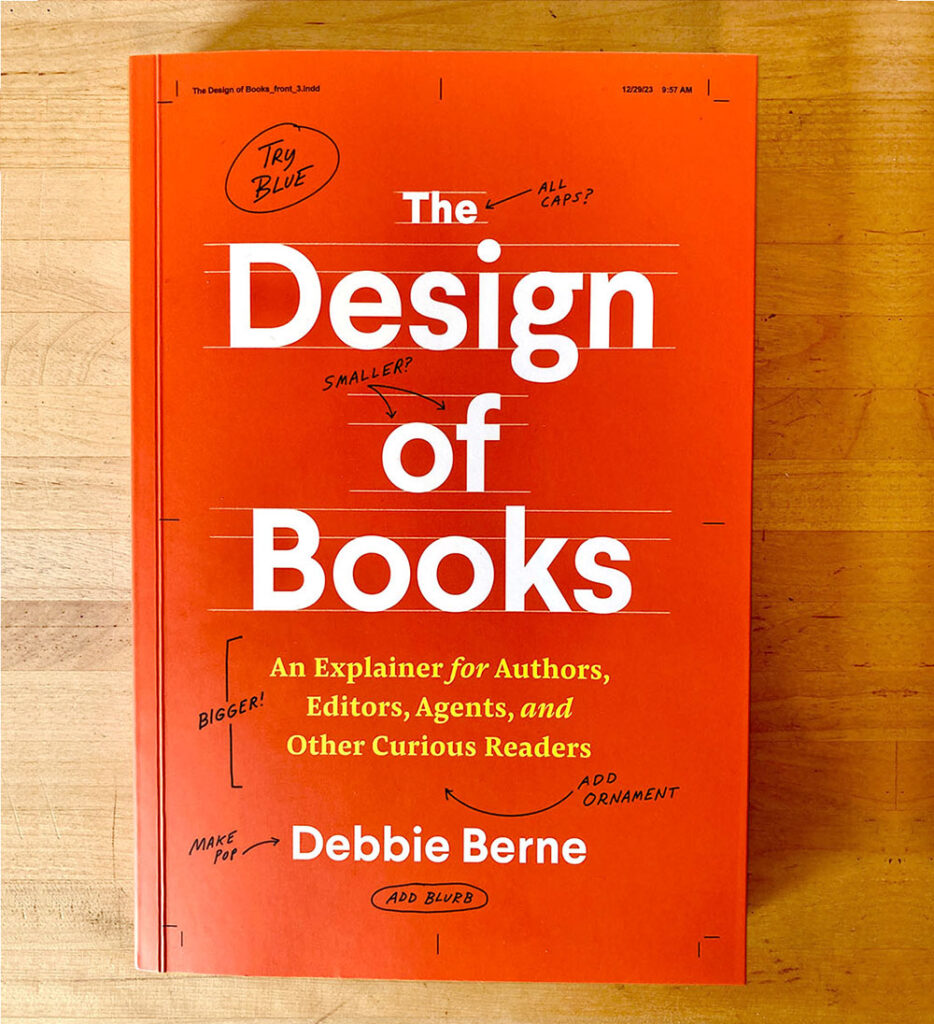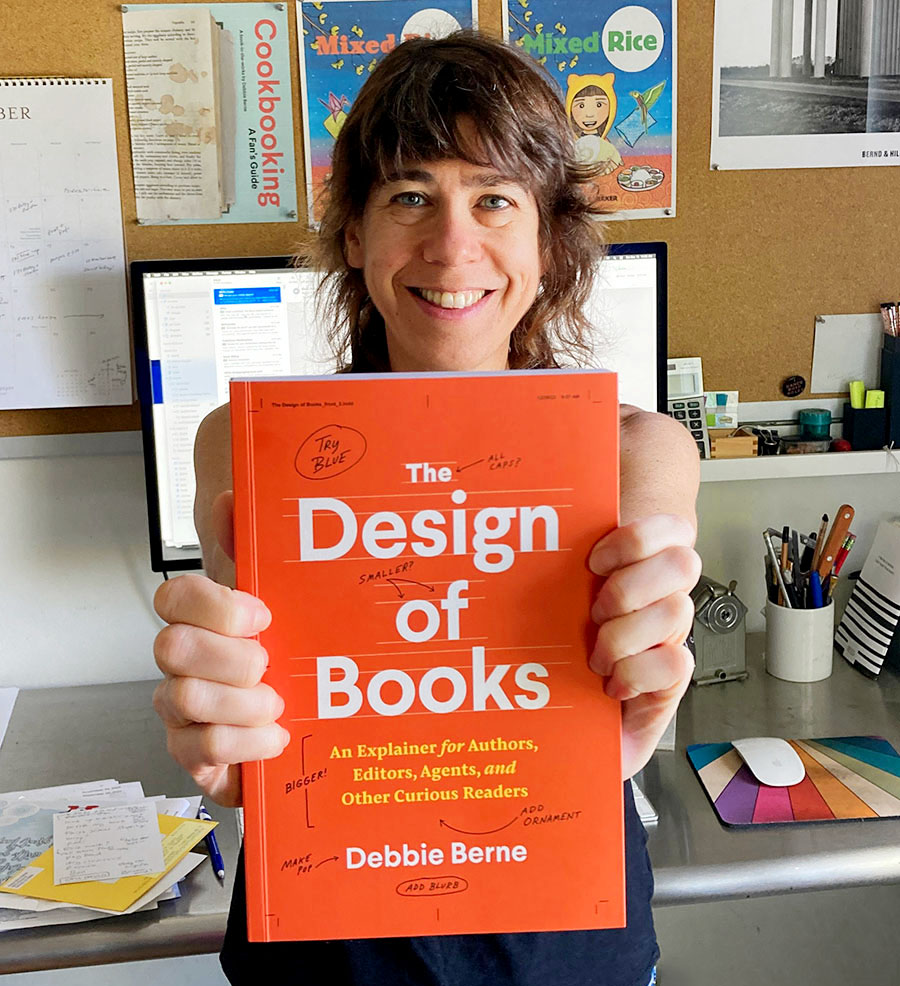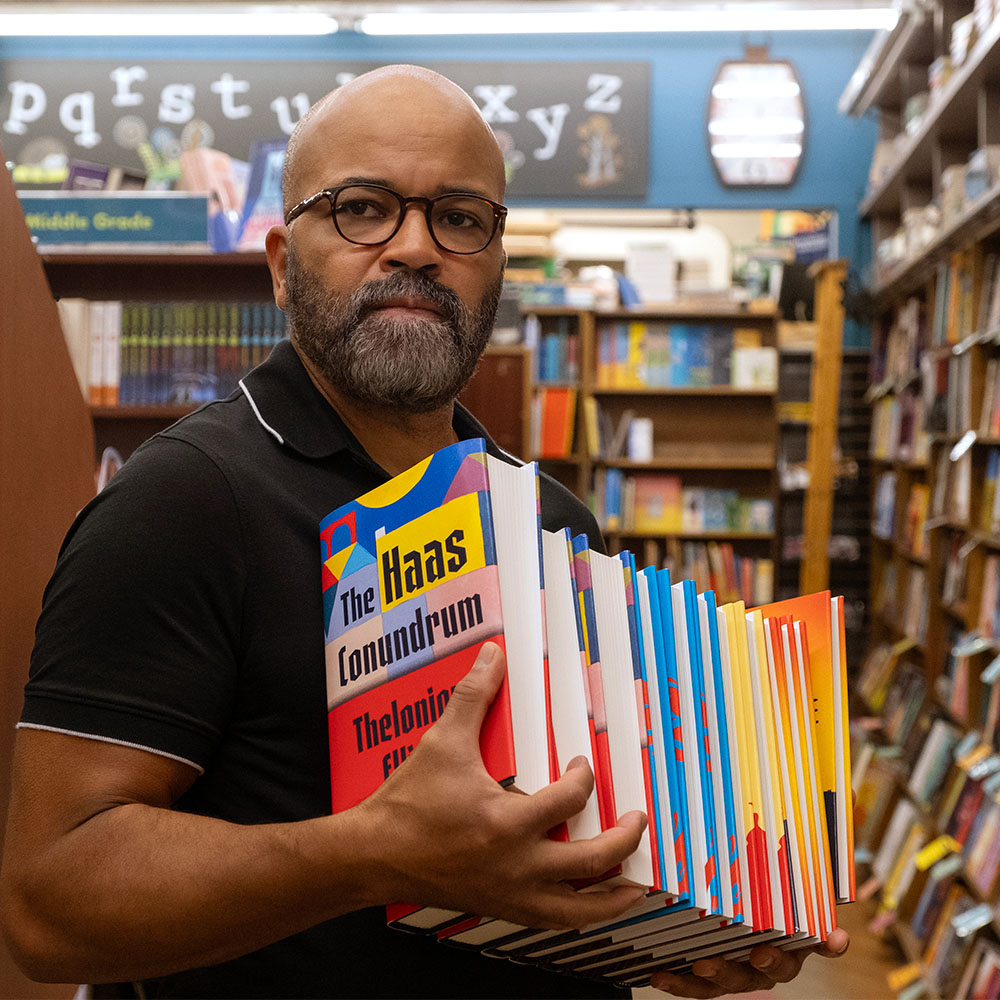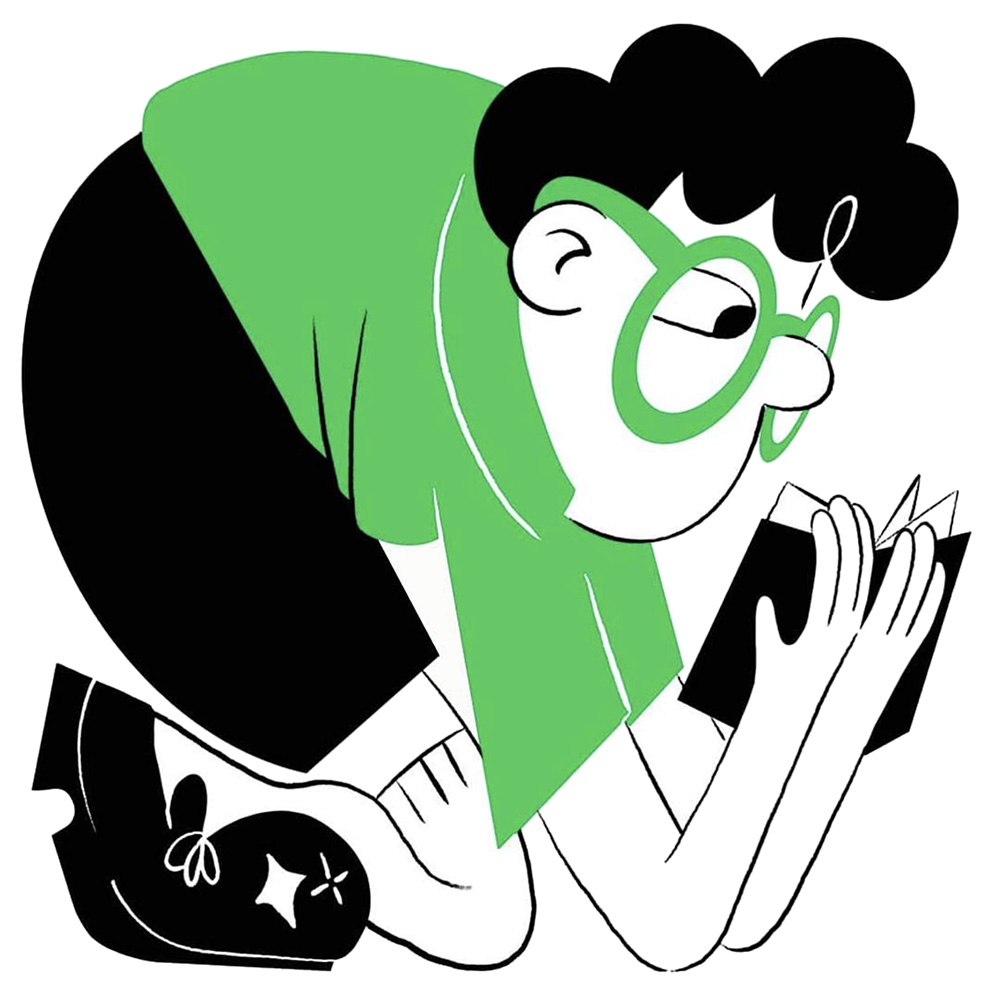In our rapidly evolving world, the spread of new AI tools can be overwhelming, if not downright terrifying, considering what AI is currently capable of achieving in such a short span of time. As a cover designer and illustrator, I encountered mixed reactions when AI tools like Mid Journey and Chat GPT were introduced, with many expressing only negative opinions about them. It’s true that there is some ambiguity, and most likely infringements regarding the origin of the datasets used, and it is important to strive for a better understanding of the learning process behind these tools. However, I would like to shed light on a more optimistic perspective regarding how AI can potentially assist and enhance the work of designers and other professionals in the publishing industry, including Art Directors, Editors, Marketers, and Authors, among others.
We should be wary but open-minded
Over the past year, I’ve been on a mission to learn more about the new tools available to us. I’ve been experimenting and playing around with them, learning how they work and how to make the most of them. I’ve been trying to find clever ways these tools can enhance my art practice and alleviate the mundane sides of my workload.
I listened recently to a Creative Review podcast in which they brought up Wikipedia as a good example. Back in 2001 when Wikipedia first emerged, I recall my teachers cautioning against relying on it as a credible source of information. Such warnings persisted for years, as people harbored fears about the overwhelming abundance of potential misinformation and its possibility to overshadow traditional encyclopaedias. Yet, today, whenever I seek quick information about historical events or figures, where do I turn? Wikipedia. Similarly, when ebooks surged in popularity, posing a threat to physical book sales, many believed they would dominate the publishing industry. However, as the dust settled, individuals like myself realized how much we love holding and reading (and the glorious new book smell) from a physical book, and things inevitably leveled out.
I believe that publishing companies will do themselves a disservice if they reject the entire notion of AI altogether. My mentality is, if this is the future, and it possibly won’t disappear if I close my eyes and ignore it, how then, can I befriend it so that I am not left behind? How can we utilize it early, and rewrite the narrative on how it can be used in a healthy way in our industry and companies? When the strongest voices have the ability to shape and lead our culture, how can publishers and their leading professionals vocalize and steer the narrative and relationship between its users in our industry and AI through a positive lens? If we are striving to stay fresh, and ahead of the game, we cannot dismiss it altogether.
In my opinion, if someone is truly skilled in their craft, they will constantly be growing, molding themselves, and adapting to new and available tools. As a designer, I’ve always enjoyed researching the latest font styles, color schemes, and design trends predicted for the upcoming year. I make an effort to stay up to date with design news and discover new and upcoming designers and artists. Ignoring these important aspects can quickly make a designer’s work look outdated. The same goes for publishers. If they stick to what’s already proven to work and play it safe, they run the risk of being left behind. Taking risks and being open to new ideas is essential for staying relevant and ahead of the competition. By embracing change, exploring fresh concepts, and pushing boundaries, publishers can establish themselves as trendsetters in their field.
Recently a friend told me that my name was being used as prompts by users on Mid Journey. Upon researching this, I found many of these prompts using my name in Mid Journey’s public space and was surprised to see how little the generated images looked like my work. I know that a lot of discussions and lawsuits are happening around the infringement of copyright, with these AI tools learning from our work. Yet, I can’t help but wonder: how does this differ from certain publishers mimicking my style and work, albeit with in-house or other designers? Or even taking my work and crediting the person that mimicked it? Recently, (not naming any names) I found out that a publisher had continued a series that I had originally conceived and designed. Incredibly, the new book blatantly imitated my title blocking, font selection, design style, and even the placement of illustrations. What made matters worse was that not only was I denied any form of acknowledgment, but another designer had been attributed as the creator without any mention of “based on original work by Micaela Alcaino.” And this title went to print and has been published with another designer taking credit for it. So, it makes me wonder if we are so focused on AI stealing our work, should we also not look at our past from humans stealing and taking credit from other creators’ work? I have seen so much work out there that mimics my style of design and illustration, but at the end of the day, if I am constantly molding, shaping, and pushing my style, AI or other designers will only be left trailing my past work. In the same way, AI models only get taught on past work, but never learn to pave the way in setting new trends and boundaries. So how can we keep one step ahead in this conversation over AI?
Useful AI tools and how I believe they can shape design and publishing
I think the way we should approach AI is to see it as an aid, an intern as you like, to help brainstorm ideas, and also make the mundane or time-consuming chores in our jobs a little easier. Here are some AI programs that I think have the potential to help in all areas of publishing.
Mid Journey
As mentioned before I do not agree with the lack of understanding and openness by Mid Journey on where the data sets are being provided, and I do not believe in using this tool as an end product. However, I do believe that Mid Journey has the potential to be a valuable tool for designers and art directors. Throughout my years of practice, I have relied heavily on platforms like Pinterest to gather inspiration when I couldn’t visit art galleries or exhibitions. This is when my interest in Mid Journey peaked. I started to play around with the tool and realized very quickly how useful and specific it could be when helping me brainstorm ideas when looking for inspiration. What could take days on Pinterest and reading through art books, I now had the power to input keywords to generate and brainstorm ideas alongside my previous practices.
Recently, a friend of mine, who works as an Art Director, encountered a challenge while collaborating with an illustrator. The illustrator was struggling to visualise a particular magical creature and my friend found it difficult to communicate the desired appearance. So while we were having lunch I inputed prompts into Mid Journey and shared some of the examples it generated. My friend found it incredibly helpful and used it as a tool to explain to the illustrator how the creature could look. For many designers and art directors who may not possess illustrative skills themselves, often relying on the expertise of illustrators and freelance designers to bring their ideas to life, Mid Journey has the potential to significantly alleviate their workload by simplifying the briefing process, aiding in idea generation and composition, and facilitating the creation of precise mood boards to collaborate with freelancers effectively.
Speaking from my own experience as an illustrator, particularly when drawing animals and people, I have often spent a considerable amount of time searching for reference images and photographs to assist me in accurately sketching body positions and hand gestures. Unlike some illustrators who can work purely from imagination, I rely on visual references to get the correct shapes when sketching. There have been instances where I struggled to find the right body composition while drawing a person, and this is where Mid Journey has proven valuable. Additionally, the tool has come in handy when seeking inspiration for colour palettes and lighting.
Be aware: It is crucial to emphasize that when engaging in creative processes, exploration, or brainstorming with Mid Journey, one should not use this as the end product. I strongly advocate for utilizing it as a tool for brainstorming purposes, and not as a mere means to an end.
AI-generated images in Stock Libraries
Recently, Adobe introduced Adobe Firefly, while Shutterstock unveiled its own AI generator, both utilising their extensive image databases. This development holds tremendous potential for designers who rely on stock imagery for creating cover designs, as it enables them to explore new realms of creativity and generate more distinct visuals.
I’m not going to lie but there is one particular antique key on Shutterstock that I have used on at least two covers in the past in different ways, and have seen the same Shutterstock male silhouette on multiple crime covers. Now, designers have the potential to generate fresh visuals and imagery, knowing exactly where the content originates, and paving the way for expanded and elevated designs with a unique touch.
Be aware: With some Mid Journey imagery sneaking its way into stock libraries (see Sarah J Maas and Christopher Paolini’s recent scandals), we need to be sure that any imagery we find in these libraries is actually created by its creator. AI-generated images still have a certain look, so if anything looks potentially uploaded from a DALL-E or Mid Journey source, question its credibility.
Chat GPT
The current golden child of AI, Chat GPT, has sparked some worries about it potentially taking over jobs from copyrighters, editors, and proofreaders. But just like Wikipedia, I believe that this won’t be the case. The human touch will always be irreplaceable in these roles. Nevertheless, Chat GPT can be a fantastic tool to make these jobs faster and more efficient, especially when it comes to the less exciting parts. It’s great for catching errors and brainstorming ideas for cover copy. It’s also handy for ironing out plot holes, creating vivid character descriptions, and improving sentence structures, providing fast feedback. It can help Marketers brainstorm ideas for campaigns, or smaller and more mundane jobs such as writing short posts for social media. Readers have also embraced its capabilities, leveraging it for book recommendations.
In my personal experience, I have utilised Chat GPT to assist me in articulating the process behind my work better, particularly during hectic periods or when I struggle to string together a coherent sentence after a long week of designing.
So, we shouldn’t be afraid to embrace tools like Chat GPT as a way to enhance and polish our work, in a similar manner I use the undo button when I make a mistake when illustrating on Procreate. But in all these areas it will never be able to replace the value of book reviews from real friends and colleagues, the unique insights and judgments that come from human experience in the industry when editing a book or creating a campaign, nor the consistency of a genuine tone of voice for social media posts. The best stories and campaigns have always succeeded when there is a clear, unique, and diverse tone of voice, and I think this is where AI tools such as Chat GPT fail.
Be aware: As previously stated in regards to Mid Journey, it is important to approach Chat GPT as a tool for brainstorming rather than relying on it to generate entire books. While the ingenuity of the human mind cannot be replaced by AI, it is crucial for our companies and industry to engage in discussions on the ethical utilization of this tool.
Speechify
I truly believe I need to start getting paid by Speechify (hint, hint) for the amount of times I have recommended this app to people in the industry. It works as an app that reads out any PDFs, documents, or webpages uploaded to it, with many high-resolution voices to choose from. My particular favourite is the Gwyneth Paltrow voice, and a British voice called Stephanie. As an incredibly slow reader (the irony), this app has revolutionised my ability to get through manuscripts in record time. Reading entire manuscripts, when available, is a large part of my art practice before starting a cover design project. It used to be a real struggle because I simply didn’t have the time to sit down and read it all. But now, I just need to upload the manuscript to the app and let it read out to me while I design. I also know that this has helped Editors and Agents get through manuscripts faster and it can also prove to be a useful tool to authors when wanting to hear their own words played back to them.
So what next?
Instead of outright dismissing AI and disregarding its potential benefits, we should actively seek ways to embrace its positive aspects while engaging in open conversations within our companies to address any concerns. Since AI is not going away and is here to stay, we should take the opportunity to reshape the narrative surrounding its use in our industry while we still can. Let us strive to recognise and seize the opportunities that AI offers, enabling us to enhance our creative endeavours while transforming the perception of its application in the industry in a healthy way. I have written this article so that we may be able to start opening up the conversation about AI, it is also a means to urge companies to not dismiss and disregard the subject altogether because that will surely leave us behind in our rapidly evolving world. So let’s discuss, brainstorm, and rewrite the narrative for our industry before it writes its own narrative without us.
Micaela’s article was originally published on LinkedIn on July 6, 2023

